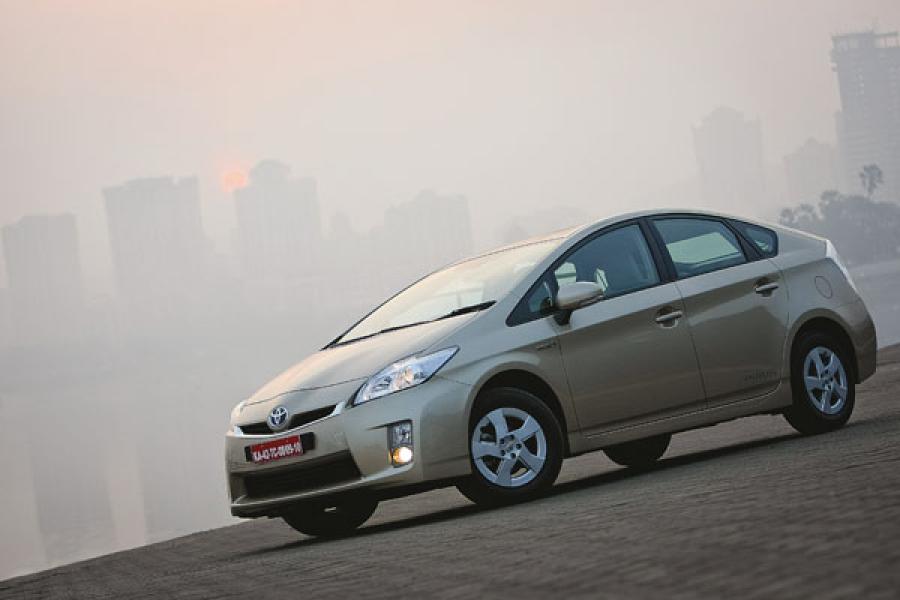
A Lowdown on the Toyota Prius
Driving the Toyota Prius in India. Can it do what the Civic Hybrid couldn’t?
The Prius looks like a sharp, modern, even mildly futuristic car. The shape is fresh, with a drag coefficient of 0.25, one of the best in the world. It gains definition from its taut lines at the shoulder and the bottoms of the doors. The new headlamps go rather with the bonnet and air dam. Forget function, the form itself is slippery enough to grab attention.
Fit and finish are excellent. The interiors have a sense of quiet, understated class. It feels special before you even depress the power button. The gorgeous instruments are laid out in long display at the head of the console, giving the car a futuristic, classy, fun air. Spaciousness? With a 5’11” driver seated comfortably, we eased our 6’8” tall TV show producer into the rear seat with his knees barely touching the driver’s seat.
The Prius switches on, rather than starts up. The display reads simply, “Ready”. No sound, just lights. It’s eerily quiet in full electric mode and not just inside; our honking-shy driving saw us sneak up on pedestrians repeatedly. Even when the petrol engine is running, you can’t hear it inside unless it’s death-quiet outside. The car surprised us with a 100kmph in 11.7 seconds in power mode; in economy, 12.6 seconds. How quick is that? The Toyota Corolla Altis takes 12.3 seconds. In Mumbai traffic — a couple of open 70kmph stretches, lots of first gear crawling, a few stops and some traffic lights, a good representation of the average commute — it returned 24.66kmpl, to the Altis’s 10.5. This is the most fuel efficient car I’ve ever driven!
Buttons select power mode for max thrust and eco mode, the usual choice for everyday work, and an EV button enables full electric operation. It uses a NiMH battery pack designed to last the life of the car, and the computer ensures that the battery is never fully charged or fully discharged to extend life. (In the US, Toyota offers, 8- or 10-year, 100,000km or 150,000km battery warranties, and the official word is that no Prius has ever had batteries replaced under warranty. They’re that reliable.)
At heart, it is an easy, breezy car to drive. Acceleration is more than adequate for traffic, it holds speeds high (top speed is well north of 150kmph!) and low with gracious ease. Ride quality is a bit stiff, but very comfortable. The steering feels light but doesn’t return much feedback; parking and manoeuvring in traffic is effortless. The Prius drives like an agile, quick city car, enjoyable, high-tech, ultra-frugal. What it isn’t is cheap. Toyota will sell two variants, the top one tagged at Rs 27.85 lakh ex-showroom with leather seats and seat heater, features superfluous in most Indian conditions; we’d stick with the Rs 26.55 lakh base version. There’s a 3-year, 100,000 km warranty.
At this kind of money, the superb economy is but a side-effect. What you’re really buying is the image. And that the Prius has in spades. Where the Fiat 500 and the Beetle lean on their past for their aura, the Prius points to our future. It is going to charm the wallets off buyers. This will be an ultra-cool, infinitely classier way to turn up at the Taj than in the traditional limo.
The author is Deputy Editor, Overdrive. Read the full review in Overdrive’s March edition or at overdrive.in
(This story appears in the 19 March, 2010 issue of Forbes India. To visit our Archives, click here.)
Post Your Comment















